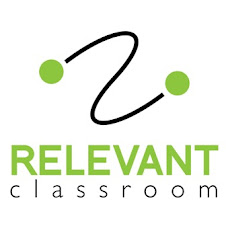
(See Annie's comment below!)
Do not be surprised if you see future Tip of the Week with nearly the same title. Why? Because I just stumbled upon their site/project today and I can't get enough of it! As we did deeper I’m sure there will be more gems to share.
First, there has to be well over 100 video interviews with people from all over the country, in all different careers. Now that have your attention, you may be asking, “What the heck is Roadtrip Nation?”
Well, it started with a few college graduates who didn’t know what to do with their lives. They took a road trip across the country, filming and interviewing industry leaders with the purpose of exposing themselves different careers and discovering how others found their passions. Here is their manifesto:
So, what do you want to do with your life?
“You should be a doctor, an accountant, a consultant…..blah, blah, blah.”
Everywhere you go people try to tell you who to be and what to do with your life. We call that THE NOISE. Block it. Shed it. Leave it for the conformists. As a generation, we need to get back to focusing on individuality. Self-construction rather than mass production.
Define your own road in life instead of traveling down someone elses.
Listen to yourself. Your road is the OPEN ROAD. Find it.
Find the Open Road
The project was picked up by PBS and has now been through several seasons. You can watch episodes or individual interviews. Use the project to expose your students to what’s out there! If you teach a careers class or have an advisory, dive into the Roadtrip Nation as a project. If you are just doing your part to expose students to careers in the fields related to your subject matter, pull off a related interview or two.
Enjoy!
Hi Relevant Classroom!My name is Annie and I'm the Director of Education for Roadtrip Naiton.
We were so excited today to see your shout out to us on your blog - and I just wanted to add a few things to your original post to further explain how we fit into the classroom setting.
Secondly, over the last year and a half, we have been developing a curriculum geared towards secondary school students to help them define their own roads in life.
Our curriculum, The Roadtrip Nation Experience, is made up of 24 Internet-based, multi-media/interactive lessons that essentially sit on top of our Interview Archive. Students participating in The Roadtrip Nation Exprience will receive full access to this online curriculum as well as a supplemental workbook which provides experiential activities that correspond with each online lesson.
Our curriculum is geared towards our end goal in mind - to provide students with the resources they need to 'hit the road' in their own communities and find Leaders who might be able to provide insight about careers and life experiences that the students find interesting and meaningful.
It is our hope that this curriculum enables students to gain the self-confidence they need to create a life based on what matters to them most.
For more information about The Roadtrip Nation Experience, or how you can bring it to your school site, please visit roadtripnation.orgLooking forward to hearing from you.
Cheers!
Annie Mais
Director of Education
RoadtripNation.org
annie@roadtripnation.org




















